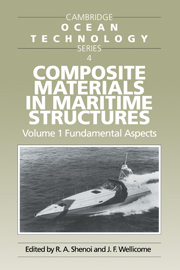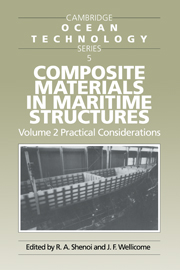Refine search
Actions for selected content:
106069 results in Materials Science
Epilogue
-
- Book:
- Magnetic Materials
- Published online:
- 05 June 2012
- Print publication:
- 19 August 2010, pp 229-229
-
- Chapter
- Export citation
III - Device applications and novel materials
-
- Book:
- Magnetic Materials
- Published online:
- 05 June 2012
- Print publication:
- 19 August 2010, pp 175-176
-
- Chapter
- Export citation
17 - Magnetic semiconductors and insulators
- from III - Device applications and novel materials
-
- Book:
- Magnetic Materials
- Published online:
- 05 June 2012
- Print publication:
- 19 August 2010, pp 197-215
-
- Chapter
- Export citation
5 - Paramagnetism
- from I - Basics
-
- Book:
- Magnetic Materials
- Published online:
- 05 June 2012
- Print publication:
- 19 August 2010, pp 48-64
-
- Chapter
- Export citation
I - Basics
-
- Book:
- Magnetic Materials
- Published online:
- 05 June 2012
- Print publication:
- 19 August 2010, pp 1-2
-
- Chapter
- Export citation
16 - Magneto-optics and magneto-optic recording
- from III - Device applications and novel materials
-
- Book:
- Magnetic Materials
- Published online:
- 05 June 2012
- Print publication:
- 19 August 2010, pp 189-196
-
- Chapter
- Export citation
7 - Ferromagnetic domains
- from I - Basics
-
- Book:
- Magnetic Materials
- Published online:
- 05 June 2012
- Print publication:
- 19 August 2010, pp 79-95
-
- Chapter
- Export citation
10 - Summary of basics
- from I - Basics
-
- Book:
- Magnetic Materials
- Published online:
- 05 June 2012
- Print publication:
- 19 August 2010, pp 130-132
-
- Chapter
- Export citation
2 - Magnetization and magnetic materials
- from I - Basics
-
- Book:
- Magnetic Materials
- Published online:
- 05 June 2012
- Print publication:
- 19 August 2010, pp 14-21
-
- Chapter
- Export citation
13 - Magnetoresistance
- from II - Magnetic phenomena
-
- Book:
- Magnetic Materials
- Published online:
- 05 June 2012
- Print publication:
- 19 August 2010, pp 156-168
-
- Chapter
- Export citation
9 - Ferrimagnetism
- from I - Basics
-
- Book:
- Magnetic Materials
- Published online:
- 05 June 2012
- Print publication:
- 19 August 2010, pp 113-129
-
- Chapter
- Export citation
1 - Review of basic magnetostatics
- from I - Basics
-
- Book:
- Magnetic Materials
- Published online:
- 05 June 2012
- Print publication:
- 19 August 2010, pp 3-13
-
- Chapter
- Export citation
Frontmatter
-
- Book:
- Magnetic Materials
- Published online:
- 05 June 2012
- Print publication:
- 19 August 2010, pp i-vi
-
- Chapter
- Export citation
References
-
- Book:
- Magnetic Materials
- Published online:
- 05 June 2012
- Print publication:
- 19 August 2010, pp 262-269
-
- Chapter
- Export citation
12 - Nanoparticles and thin films
- from II - Magnetic phenomena
-
- Book:
- Magnetic Materials
- Published online:
- 05 June 2012
- Print publication:
- 19 August 2010, pp 145-155
-
- Chapter
- Export citation
8 - Antiferromagnetism
- from I - Basics
-
- Book:
- Magnetic Materials
- Published online:
- 05 June 2012
- Print publication:
- 19 August 2010, pp 96-112
-
- Chapter
- Export citation
Acknowledgments
-
- Book:
- Magnetic Materials
- Published online:
- 05 June 2012
- Print publication:
- 19 August 2010, pp xiii-xiv
-
- Chapter
- Export citation

Composite Materials in Maritime Structures
-
- Published online:
- 04 August 2010
- Print publication:
- 28 May 1993

Composite Materials in Maritime Structures
-
- Published online:
- 04 August 2010
- Print publication:
- 28 May 1993
Designing and Engineering Stem Cell Niches
-
- Journal:
- MRS Bulletin / Volume 35 / Issue 8 / August 2010
- Published online by Cambridge University Press:
- 31 January 2011, pp. 591-596
- Print publication:
- August 2010
-
- Article
- Export citation
